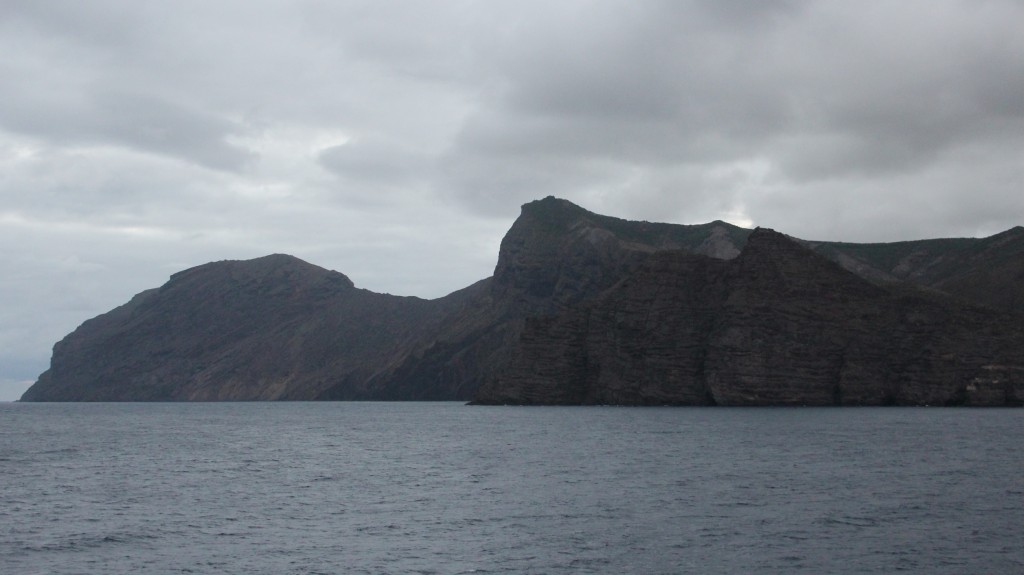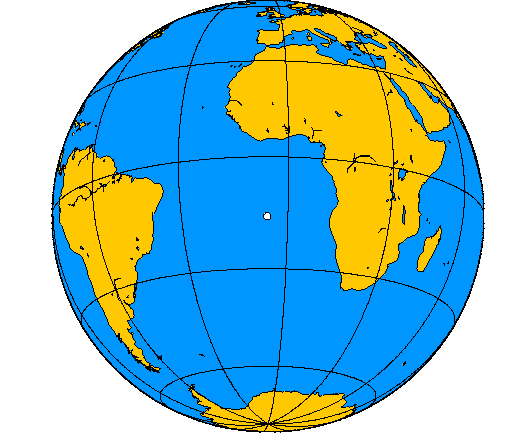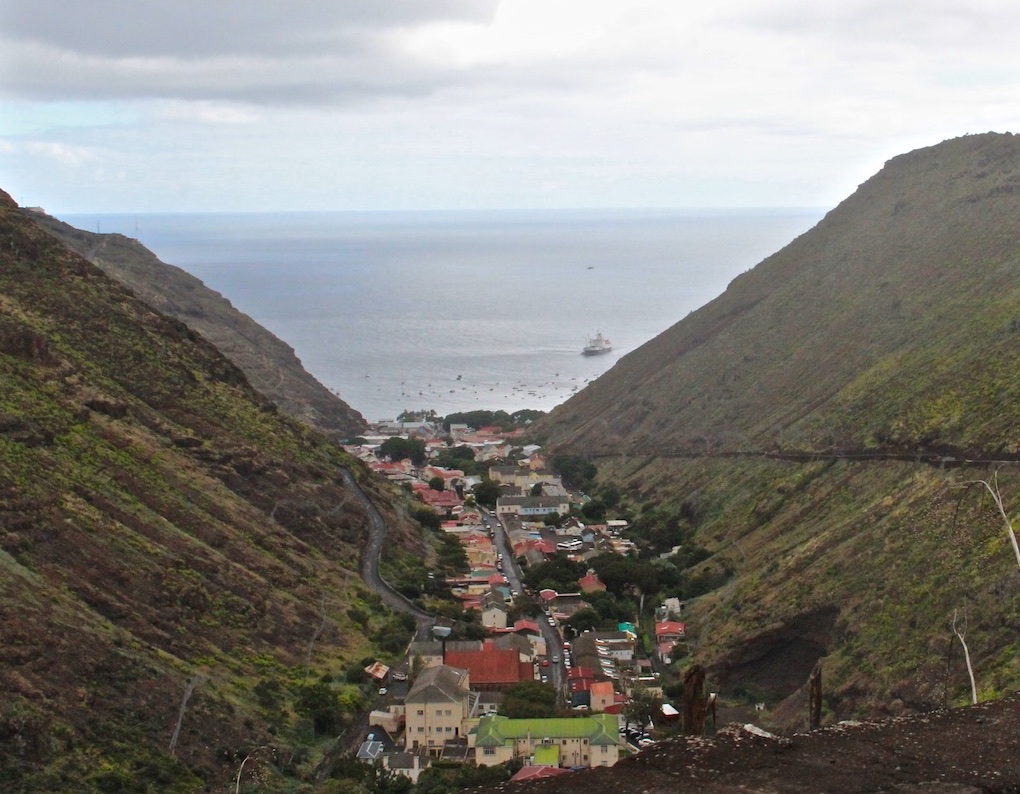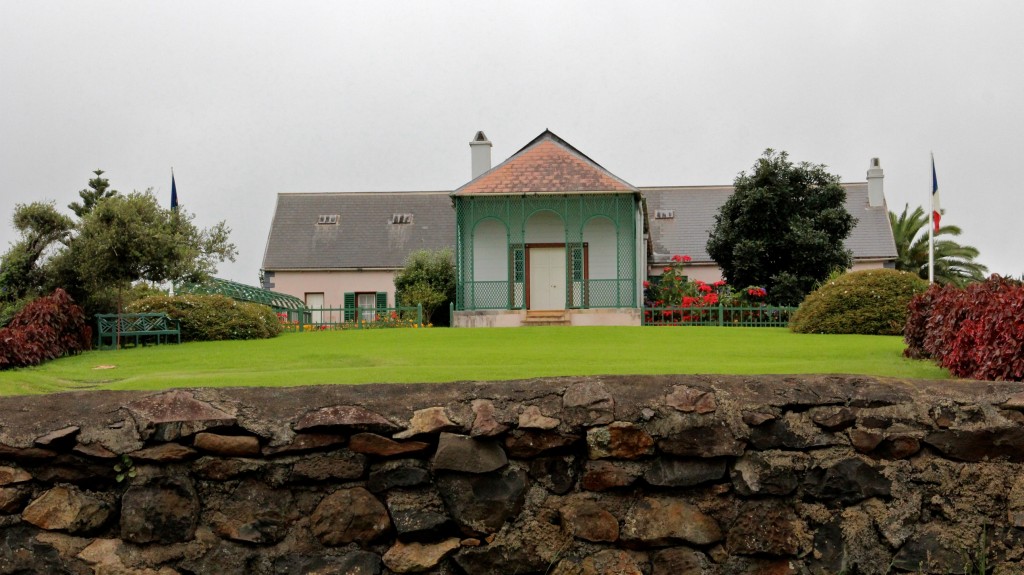
Finding Napoleon on St Helena Island
In 2011, I had the great adventure of traveling St Helena—the site of Napoleon Bonaparte’s final exile and death. Situated in the remote South Atlantic Ocean, 4,500 British citizens call this fascinating spot home. I went there to conduct research for my novel. Indeed, much of Finding Napoleon takes place there. In addition, many of the posts on my website deal with Napoleon’s exile there, as well as St Helena in general.
Finding St Helena Island Itself
Ten by five miles in size, the volcanic outcropping is located twelve hundred miles from Africa and eighteen hundred miles from Brazil. Most importantly—particularly in Napoleon’s era—that puts it five thousand miles from Europe.
On the globe below, it’s that white speck in the blue ocean you have to squint to see.

My Visit to St Helena
When I visited St Helena, it still didn’t have an airport. Getting there required a five-day voyage from Cape Town, South Africa, on the RMS St Helena, one of the last British mail ships. We spent nine days on the island before the five-day trip back to Cape Town. To give you a sense of the island, here’s a four-minute video from our visit:
But What About Napoleon’s Exile on Elba?
When most people (especially Americans) talk of Napoleon’s exile, they usually mention Elba, not St Helena. Napoleon did, indeed, spend ten months in exile on that Mediterranean island. That was before his time on St Helena.
Here’s a brief history (and interesting story):
In 1814, Napoleon lost the war with the Sixth Coalition of Great Britain, Russia, Sweden, Prussia, and Austria. In a generous settlement, he became the Emperor of Elba, a small island off the Italian coast, two days’ sail from France.
During that time, the French became dissatisfied with the French king, Louis XVIII (brother to the guillotined Louis XVI). Additionally, Napoleon didn’t receive the funds he’d been promised and was running out of cash to support his entourage. Worse, he heard rumors he was going to be sent to far-off St Helena. There were even hints of his assassination.
Being Napoleon, he seized the opportunity. Taking advantage of lax British oversight, he sailed back to France with a force of 800 soldiers and four cannons. They landed on the southern coast of France on March 1, 1815. Over the next twenty days, they marched five hundred miles to Paris, gaining support along the way. The king fled. Most of France, swept up in the heroic moment, rejoiced.
Napoleon reinstated himself as Emperor of the French, without firing a shot. But on June 18, his loss at the Battle of Waterloo reversed his comeback. Counting on another generous settlement, Napoleon surrendered to the British. This time, they sent him five thousand miles away to remote, forbidding St Helena.
That’s a huge simplification, but I hope enough to explain the situation.
Napoleon on St Helena

Napoleon arrived on St Helena on October 15, 1815. He was only forty-six years old but aging quickly. He died there on May 5, 1821, broken of body and spirit.
In the years before Napoleon’s exile, the British East India Company had maintained the little island as a depot for ships traveling around Africa’s Horn in route to and from India. The island had no native inhabitants, so the residents were mostly European officials and traders, plus free, indentured, and enslaved workers. The terrain was too mountainous and desolate to support plantations or large-scale farming, or, indeed, many people.
During Napoleon’s time, the British took over the island from the East India Company and governed it directly. The population of 3,600 soared to over 6,000 as troops arrived to prevent his escape.
Napoleon’s Life on St Helena
On St Helena, Napoleon lived under house arrest. For first few weeks, he stayed at an estate called the Briars. and then for more than five years at musty Longwood House atop a rainswept plain. He brought an entourage of some twenty-five French supporters and servants, so he wasn’t alone.

He was separated, however, from his family. In most cases, he wasn’t allowed to communicate with them privately or at all. This was especially true with his young son, who was only four years old when Napoleon arrived on St Helena.
Worse of all, the man who had micromanaged an empire had little to do. Certainly, he worked on his memoirs and refought the Battle of Waterloo, but one can only spend so much time reliving the past.
Always protective of his dignity and maneuvering for his release, he engaged in crucial and petty fights with his jailors. With the help of locals, he smuggled messages off the island. He ruled his little entourage, resolving the inevitable disputes among large personalities forced into close captivity. He made a few new friends and had an affair with Albine de Montholon.
Numerous contemporaneous memories detail his activities. Each is told from the perspective of its author, with all the prejudices that entails. Together they present Napoleon’s life on St. Helena as a fascinating mixture of contradictory facts, intrigue, and drama. They provided a treasure trove of research for my novel FINDING NAPOLEON.

Looking forward to hearing about the adventure!
I believe that a predecessor of our family, one Luigi Cosimini, was in the entourage of Napoleon from Russia, at Waterloo and on St Helena. Iam intrigued to know in what capacity he served Napoleon; whether as an officer or some sort of batman. Are you able to enlighten me?
Hello, Vincent,
I don’t find your ancestor’s name on the list I have of Napoleon’s St Helena entourage. I’d suggest contacting Albert Benhamou who just published a book titled, “L’Autre St Helene.” He did extensive original research into who was on the island during Napoleon’s time. His website is https://www.lautresaintehelene.com and his email is albert@benhamou.net. (Website and book in French; he speaks English.) I hope you enjoyed my site and that you find the information about your predecessor. Let me know what you learn.
All the best,
Margaret
Sorry for late reply, I am back from hols, and didn’t see a notification on my email about your question. I haven’t heard of a Cosimini in St Helena. I cannot speak about Russia: there were over 500.000 soldiers who started this doomed campaign ! Unless you are a descendant of one of the Corsican or Elban people who were with Napoleon at St. Helena, such as Cipriani, Santini, or Gentilini?
Take care
Albert
Margaret,
what a fantastic video! I was in Paris earlier this year and took particular interest in it’s history. This week, I visited a Napoléon exhibit at the Art Gallery of Hamilton,in Ontario (Canada). I much enjoyed the exhibit and it reignited my interest in all things French. I did a simple search on the internet to get more information about St.Helena and your website came up. You have a great websight. What a wonderful job you have done. Thank you! Geneviève
Thanks, Geneviève. While I took most of the photos, my husband Bert deserves credit for putting together the video of them (not to mention credit for traveling with me halfway around the world to take them). I hope you continue learning about Napoleon–although I warn you, it can become an endless pursuit. Enjoy!
Wonderful! Your video amply satisfied my curiosity about St.Helena, Longwood and Napoleon’s tomb in particular. Thank you!
I wish more Napoleon enthusiasts could visit this poignant place where so much of Napoleon’s spirit seems to remain trapped in time.
Nice website. Did you pick up the story about the glue in the wallpaper in his bedroom perhaps contributing to his early demise. i got it from a BBC radio broadcast many years ago.
I look forward to your book.Bob
I’ve read that arsenic was more likely to be found in the wallpaper itself. At that time, green pigment commonly contained arsenic and could leech into the atmosphere when moist. Longwood House is definitely a moist environment.
Thanks for visiting. Please keep in touch.
Margaret
I found your great website while reading everything I can get my hands on about Napoleon. When we started planning our trip to Paris earlier this year, I came across a lot of information about him and have been pretty caught up learning all I can. Your videos and narrative are awesome. Its so nice to find others who share this fascination with such a unique man. I nearly cried as I watched your video of him on St Helena. First time I have found such great pictures of Longwood and also of the island. Thank you for sharing!
I think its so sad, just wrong really, that he died like he did. I was surprised when talking to a few French people about Napoleon how their first reaction was what a “killer” he was. I agree. But when you put this part of his life into the context of the day, it is understandable to me. He did so many great things for France. I wish he would not have invaded Russia. That seems to be the beginning of the end for him.
Also, do you think Josephine would have joined him on Elba, or St Helena had she not died shortly after he was exiled? If I remember correctly, she wrote him a letter saying she would come to him…. or was that something I read in a fiction article. Not sure now.
Hi, Jan,
Thanks for writing. I hope you have a great time in Paris, one of my favorite places. These days–and probably for the last two hundred years–you can find lots of different opinions about Napoleon, among the French and everyone else. As you said, there’s no question he should have avoided that disastrous venture into Russia. He did many great things for France and for European civilization by preserving what was best about the French Revolution: meritocracy. I’m not sure of your source about Josephine’s willingness to join him in exile. However, if they had stayed married, I have no doubt that she would have shown much more loyalty than his second wife, Marie Louise, ever did.
I’m so glad that you enjoyed the St Helena video. It was truly a moving experience to be there.
Enjoy your trip and let me know how it goes!
All the best,
Margaret
Pingback: Finding Napoleon (and Shakespeare) on St Helena Day - Finding Napoleon
We are enjoying your interest in Napoleon as we are totally committed to Napoleonic art and history. We spend a lot of time in Ajaccio and will go to St Helena next year.
Thank you Margaret💐
Wonderful. I hope you enjoy St Helena as much as I did. I found it a magical place, especially the Napoleonic locations. Try, if you can, to visit them when you can be alone in Longwood and at the gravesite. You’re probably flying there, which wasn’t an option when I went. The RMS provided its own unique introduction to St Helena, but the airport should improve the lives of the Saints. By the way, I loved Ajaccio, too. Bon voyage! Thanks for visiting my site. Margaret
I’m like Jan who wrote in 2014.. I feel just like her. What a poignant slideshow of your trip to St Helena. One could visit palaces where Napoleon lived but this is so personal, so very sad. The video is very beautifully done, thank you. Love the site, Napoleon fans seem like the nicest people to me.
Thanks, Karen. I’m so glad you enjoyed the video. It truly represents how I felt on St Helena. My husband Bert put it together for me.
And I agree with your statement on Napoleon fans. One of the great benefits of researching Napoleon has been the friendships I’ve made. If you’re in North America, consider joining the Napoleonic Historical Society and coming to our next conference!
All the best to you!
Margaret
Pingback: WELCOME! - Margaret Rodenberg
Outstanding information presented in a concise manner. St. Helena is beautiful and your pictures portray it well! Makes me want to hop the next packet to the South Atlantic!
Just have re-found my fascination with Napoleon. Collecting little bits of items and doing hours of research and writing. Thanks for your passion for this amazing man who has such a giant hold on us all!
Randall,
Thank you for visiting my website! Be sure to join the Napoleonic Historical Society and check out the posts on the Facebook page. Good luck with your research–with Napoleon, that’s endless fun. Let me know if you need anything.
Margaret
Rex,
I’m glad you liked my photos of St Helena. It was really a trip of a lifetime, and I have great fondness for the island. Unfortunately, the RMS St Helena that we took to get there is no longer in commission. The island now has an airport with one weekly flight (if the weather allows it) from Johannesburg, South Africa. But you can’t go there now–it’s under lockdown to keep out the coronavirus. Those brave Saints (as they call the inhabitants) must be suffering a terrible economic loss, just as they were counting on increased tourism from the new airport.
Margaret
Pingback: FINDING NAPOLEON: A Novel - Margaret Rodenberg
Pingback: - Margaret Rodenberg 200 year anniversary celebration on St Helena
Pingback: FINDING NAPOLEON EXPLAINED - Margaret Rodenberg